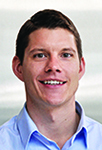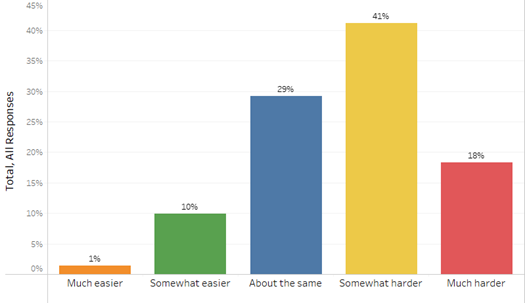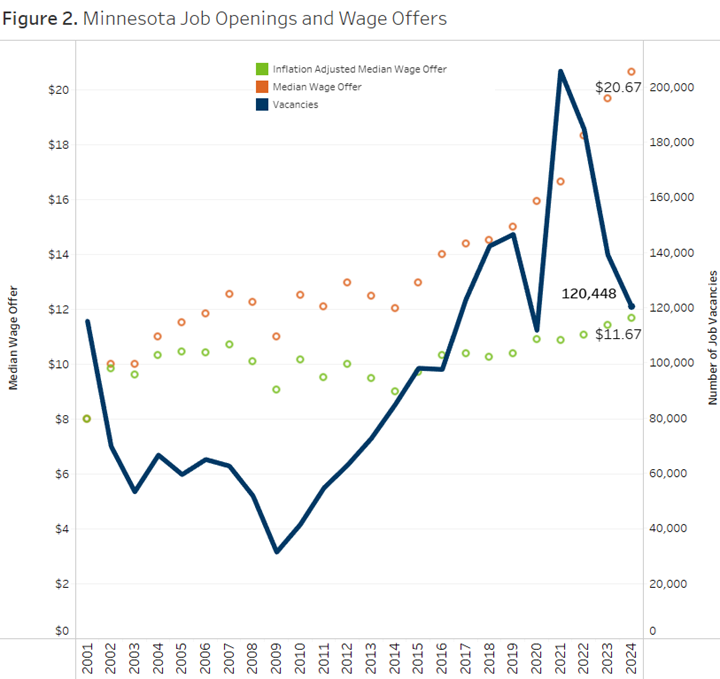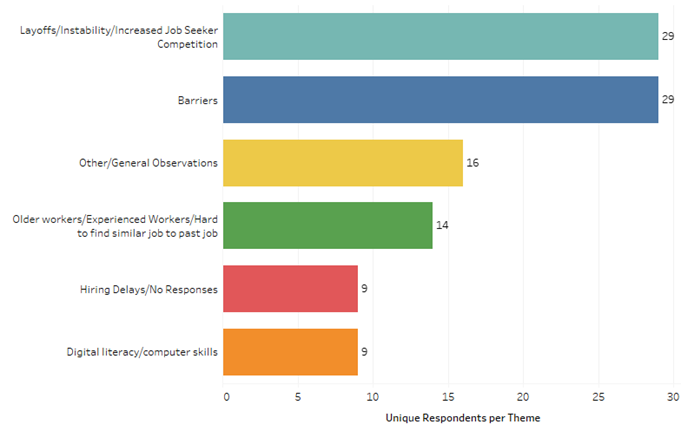Insights from the frontlines: A New Tool Reveals a Shifting Labor Market


By Rita Beatty and Luke Greiner
September 2025
Staff at the Minnesota Department of Employment and Economic Development (DEED) are always seeking new ways to collect data, analyze current labor market conditions and serve Minnesotans better. In partnership with Local Workforce Development Board leaders and staff and community-based workforce development professionals, DEED staff conducted a survey of hundreds of workforce development professionals in the CareerForce system. The CareerForce system is made up of DEED staff, Local Workforce Development Board staff and community partners across Minnesota.
These frontline workforce development professionals in the CareerForce system serve thousands of job seekers across Minnesota every week, so they are able to offer a great sense of the current job search environment across the state as well as comparisons to the job search environment a year ago. A survey of job seekers themselves would likely not be able to provide such an objective comparison over the year, nor would it be possible to consistently survey job seekers after they find employment.
The collected survey results are transformed into an interactive data visualization that allows staff, partners and the public to see the labor market through the eyes of those who work directly with job seekers. Conducted twice each year, the survey will build a time series that not only tracks the health of Minnesota's labor market but also sheds light on emerging trends and shifts affecting job seekers in real time.
Results from the Job Search Experience Survey collected in July 2025 indicate people utilizing the CareerForce system in Minnesota to look for work are having a harder time finding employment now compared to last summer. Of the 310 CareerForce staff and partner survey respondents, 294 have worked with job seekers for at least the entire past year. Of those 294, 33 (11%) said it was somewhat easier or much easier for the job seekers they serve to find employment, 86 (29%) believed it was about the same and 174 (59%) said it was somewhat harder or much harder to find employment compared to a year ago (see Figure 1).
Figure 1. On average, compared to a year ago, how would you rate the ease with which your job-seeking clients are finding employment?

Regional differences exist in perceptions of the ease to get hired, yet responses from each region indicated a generally more challenging time for job seekers to find employment. Staff who work primarily in the Twin Cities were more likely to indicate their job seeking clients are having a much harder time compared to other areas of the state. The perception of the labor market by staff who work with job seekers aligns with DEED's most recent Job Vacancy Survey, which has indicated a softening labor market since the pandemic related hiring frenzy of 2021 and 2022.
By 2024, job openings dropped 41% from a high of more than 205,000 openings in 2021. Although job vacancy data for 2025 is not yet available, the survey responses from frontline staff indicate that openings have potentially declined again in 2025.
Another factor that drives the "feel" of the labor market is the competition for job openings, not strictly the number of openings. From January through July of 2025 there were nearly 6,000 more unemployed workers seeking a job compared to the same period the year prior. If the quantity of job openings has continued trending downward at the same time that more people were unemployed and looking for a job, it would signal a weakening labor market where opportunities are shrinking and competition for available positions is intensifying (see Figure 2).

According to the Job Search Experience Survey, topping the list of occupational groups for which it is considerably harder for Minnesota job seekers to get hired for now compared to one year ago are:
- IT and Math Experts (e.g., Software Engineers, IT Support Specialists)
- Creative Professionals and Media Workers (e.g., Graphic Designers, Writers)
- Managers and Leaders (e.g., Business Executives, School Principals, Construction Managers)
The top three occupational groups for which counselors believe it is considerably easier for Minnesota Job Seekers to get hired for now compared to one year ago include:
- Healthcare Support Workers (e.g., Nursing Assistants, Personal Care Aides)
- Food Service Workers (e.g., Chefs, Servers, Bartenders)
- Cleaning and Maintenance Workers (e.g., Janitors, Landscapers, Housekeepers)
These occupational differences align with the numbers of typical openings. Categories with a higher share of entry level jobs create recurring openings from higher turnover, while the categories respondents indicated were considerably harder oftentimes have lower turnover and smaller quantities of openings. A notable exception is that staff reported a more difficult time for Managers and Leaders to find employment compared to a year ago. These occupations typically have large numbers of openings, as they did in 2024, but competition may be increasing.
Below are the most common themes shared by the 106 survey respondents who answered an optional, open-ended question at the end of the survey that read "What other perspectives would you like to share about the recent experiences of your job seeking clients?"
Figure 3. Thematic Summary of Open-Ended Responses

- 29 respondents mentioned increased layoffs, labor market instability and/or increased competition among job seekers for open positions.
- 29 respondents mentioned barriers to employment, such as a lack of child care, transportation or English language proficiency.
- 14 respondents mentioned the challenges faced by older workers and more experienced workers in finding employment similar to their past employment.
- 9 mentioned hiring delays or lack of employer response to job seekers.
- 9 mentioned the challenges faced by job seekers who lack digital literacy or computer skills.
These open-ended responses provided a candid and nuanced view from the staff helping works find employment. Below are some examples that were echoed by many others.
"I feel like the job seekers we work with in our Career Lab and within our programs are facing more complex barriers than in years past. At the same time, many employers seem to be streamlining - eliminating roles, consolidating responsibilities and adopting a 'wait and see' approach in response to our society's uncertainties."
"I am seeing people have a hard time getting to the interview stages. There are just so many applicants for the same positions. Finding work is taking longer than usual."
"There are so many job seeking clients that have limited work availability due to lack of childcare in their areas. The few jobs that do offer flexibility (restaurant work, retail, etc.) often have hours that extend past daycare provider hours, so they are often stuck in this cycle if they don't have a support system near them."
"The job market is tough, and it has been tough for a few years. Employers seem reluctant to hire more people. There are very qualified candidates who have been looking for work for up to a year or more. This is the most difficult labor market I've seen in 15 years."
"Many job seekers report being ghosted or not hearing back from employers they have applied or interviewed with."
The survey included a question aimed at ascertaining the importance of factors other than wages when job seekers are looking for suitable employment. This question read: "Generally, how important are the following job benefits/attributes to the job seekers you work with?" Respondents were able to indicate the importance of eight factors on a scale from one being not important to five being very important. They could give more than one factor the same rating.
The factor most respondents rated most highly was job security, with an average rating of 3.9 among 310 respondents, followed closely by working conditions and flexible scheduling both at 3.8. Next most important was health insurance with a 3.5 rating. Both opportunities for advancement and paid time off/vacation had an average rating of 3.2. Rounding out the rest of the eight factors were telework/remote options at 3.0 and empowerment and representation at 2.8 (see Figure 4).

The most recent Job Search Experience Survey wrapped up on July 31, with 310 Minnesota workforce professionals who work directly with job seekers sharing their insights. Now, a companion survey is being launched to DEED staff, Local Workforce Development Board staff and partner organizations who support Minnesota employers. Together, these surveys will provide a unique two-sided view of the labor market – capturing both the job seeker experience and the employer perspective. By highlighting where employers and job seekers are aligned, and where gaps exist, this information will give DEED, local boards and workforce partners the tools they need to strengthen connections and better serve both employers and job seekers across Minnesota.

